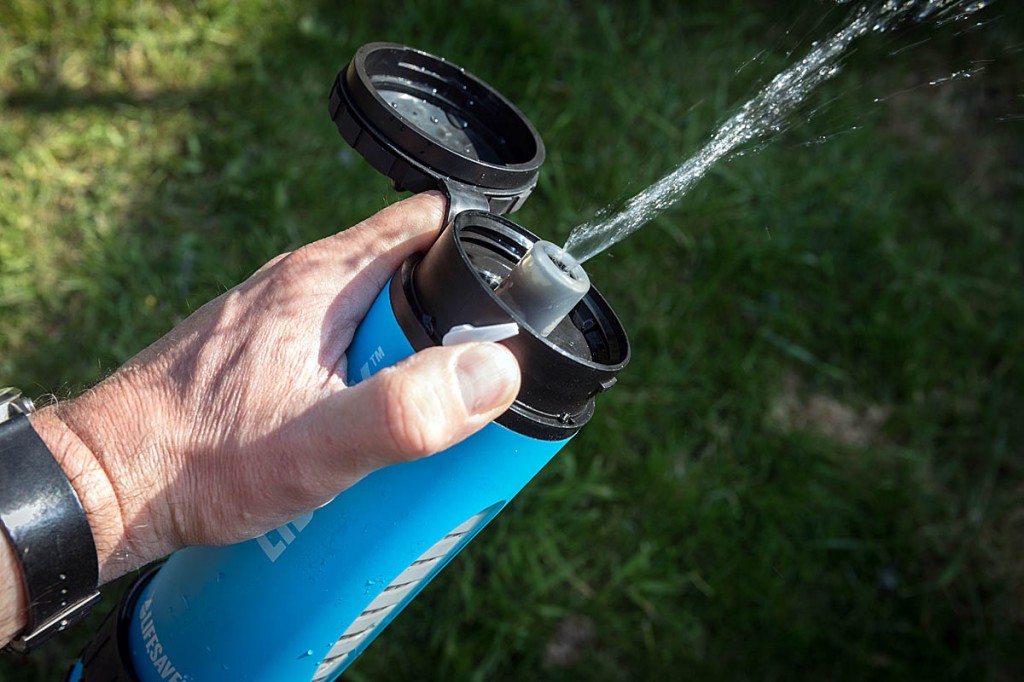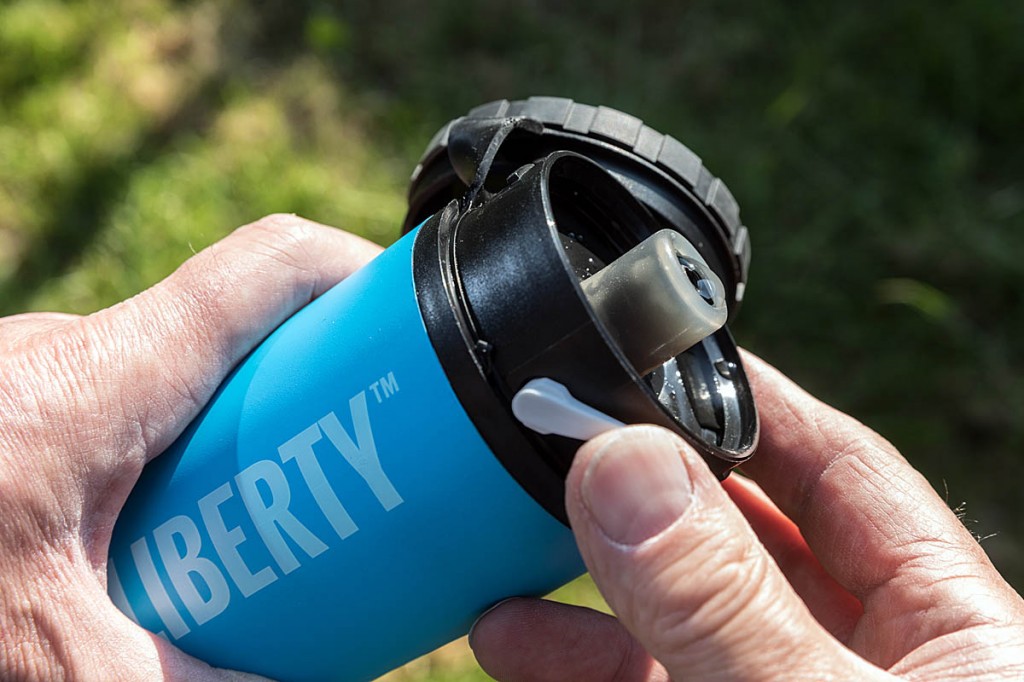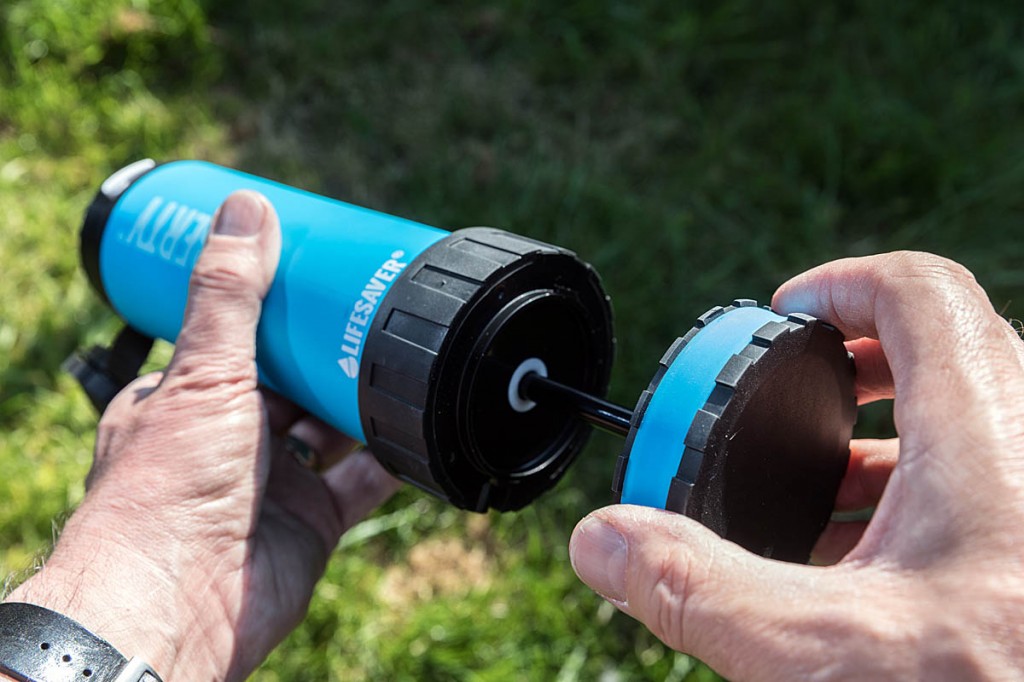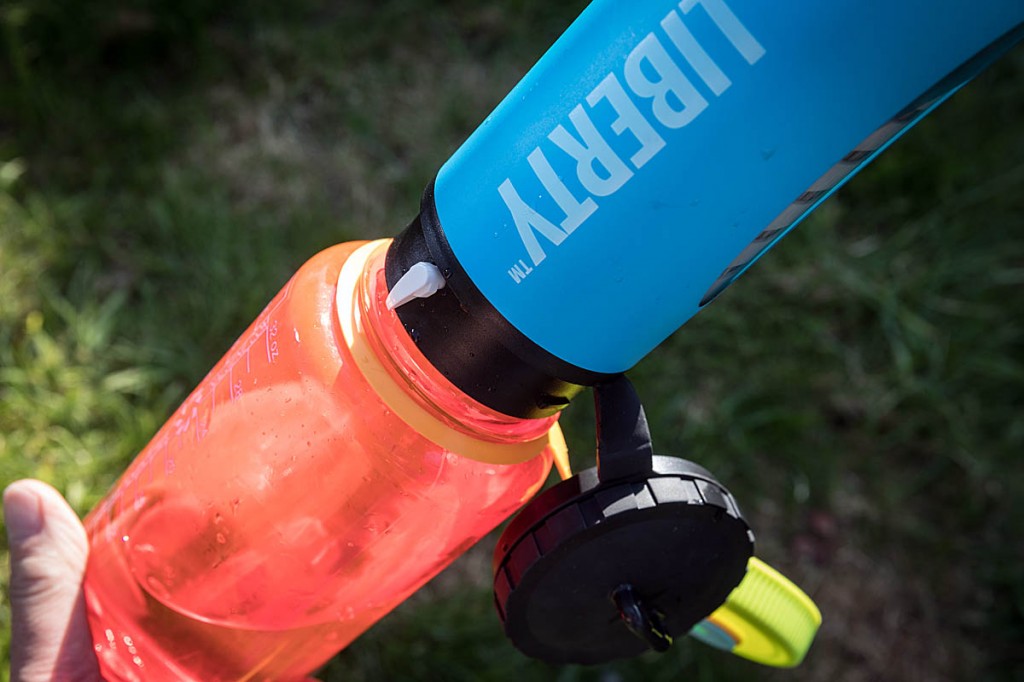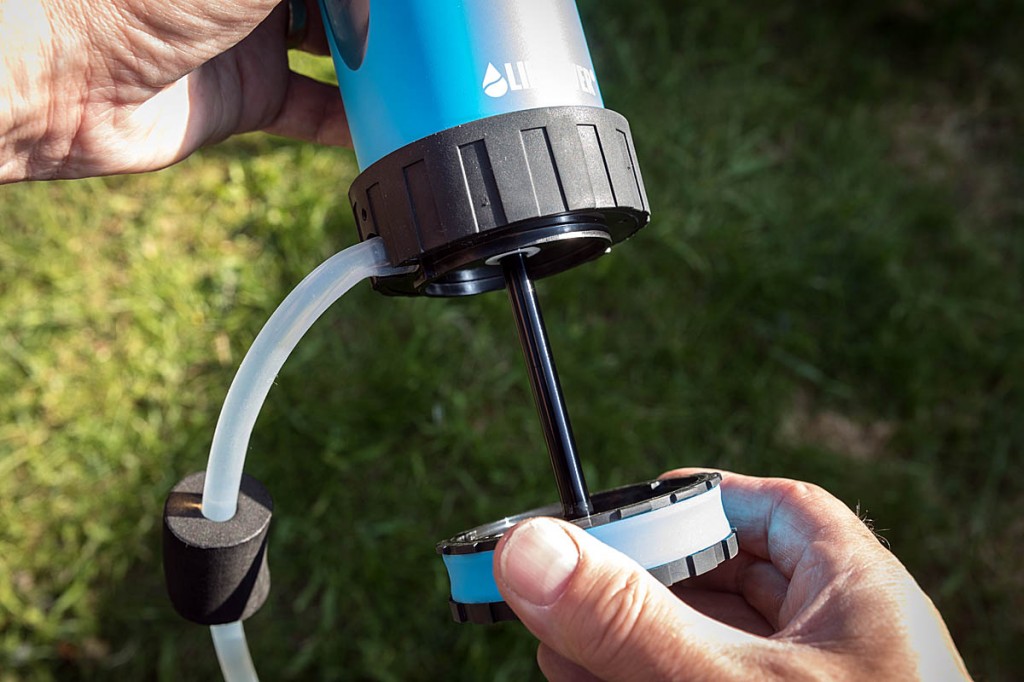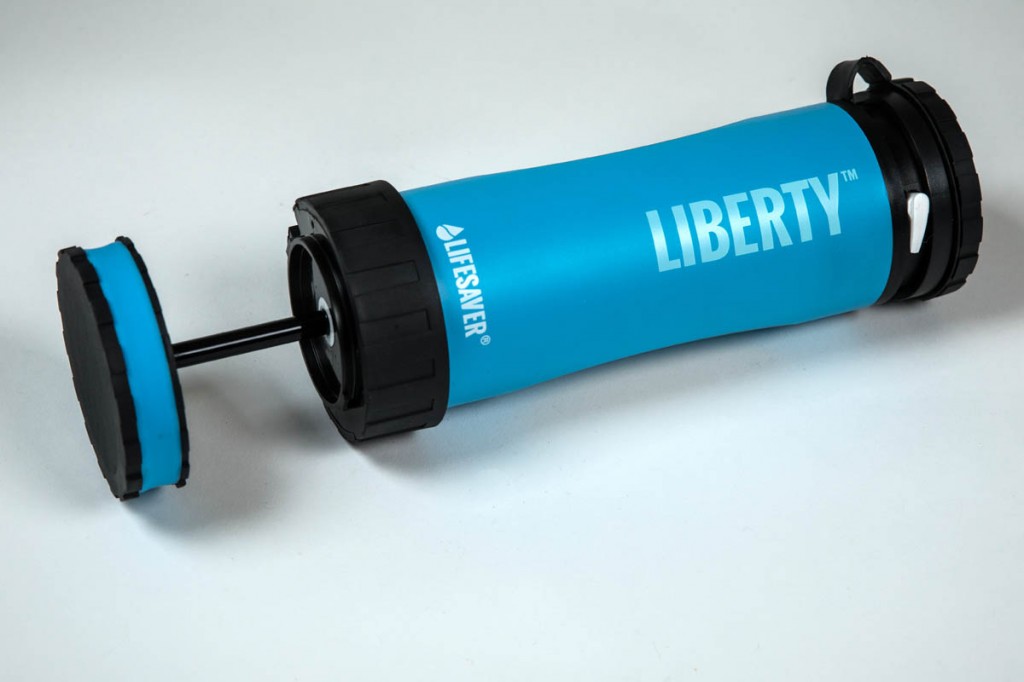Price: £124.99
Weight: 544g
Removes: cysts, bacteria, viruses, chlorine, off-tastes, odours
Clean water is an essential for outdoor enthusiasts and, while it’s relatively simple to fill a bottle or hydration system at home before you set out, carrying a large quantity of water carries a weight penalty: one kilo for every litre.
So increasingly, we’re on the lookout for ways of finding water en route, from streams and other sources. This is particularly the case when on a multi-day trip and wild camping expeditions. The problem is: what’s in the water?
Traditionally, we had to worry about cysts, bacteria and viruses that could be lurking unseen in water, whether here in the UK or further afield. But now, there’s an added problem: microplastics.
A recent study by Manchester University found a stretch of the River Tame in Greater Manchester contained the highest level of microplastics discovered globally. The physiological effects of ingesting microplastics are still unknown, but why take the risk? Even bottled mineral water has been found to have the potential to contain these contaminants.
Some years ago, the solutions to getting clean water in the outdoors mainly consisted of: boiling the water or treating it chemically. The former method is good, but means carrying a stove and being able to set it up if you need to heat the water, then waiting for it to cool. That may be OK at camp, but not convenient when on the hoof.
Iodine, one of the chemicals formerly used, is now prohibited throughout the EU, and chlorine taints the water with an unpleasant taste redolent of drinking swimming pool water.
A common alternative now is the use of filters to remove pathogens. Coarser filters will remove larger organisms, such as cryptosporidium cysts and E.coli bacteria, but viruses such as norovirus are much smaller and require a more effective filtration.
The LifeSaver Liberty is an in-bottle filtration system that will rid water of 99.9999 per cent of bacteria; 99.999 of viruses, and 99.99 of cysts.
It comes in the form of a sturdy, if a little heavy, plastic bottle with a transparent side window that allows you to see how much water is in the bottle and also gives a view of the main filter cartridge.
The Liberty works by pressurising the bottle using its built-in pump, which then forces the water through the two-stage filter and out of its drinking spout.
The water passes through the main filter array and then through an activated charcoal filter to remove any chlorine, off-tastes and odour.
The filter is rated as being capable of treating up to 2,000 litres of water and, as a failsafe, its membranes will block up it is no longer effective, cutting off water flow.
Before use, the LifeSaver Liberty has to be ‘primed’. You unscrew the base to fill it and leave the water in it for five minutes. Then empty the bottle and fill it again, pump it three times and open the lid at the top of the bottle to reveal the drinking spout. Turn the little flow valve on the side of the bottle and the water will then be forced out under pressure.
The flow soon decreases, so you need to pump the device again to maintain the flow until the bottle is empty.
This process has to be repeated once more and the Liberty is ready to use.
The bottle is fairly tall: it stands 26cm high, including the plastic loop on its lid that will take a carabiner.
Construction is good, and the lid feels secure and leak proof. It has a knurled, rubberised ring to help turning, useful when wearing gloves. The bottom section also has two knurled rings. A broad one unscrews the whole base to allow filling. A narrower one at the very bottom is the locking ring for the pump plunger. A 180-degree rotation unlocks the pump and allows it to be used to pressurise the bottle.
One slight bugbear is that, although the Liberty is quite a big bottle, its capacity isn’t. Because the filter cartridge and pump tube take up quite a bit of room inside it, it’s rated to hold only 400ml. We found this a little optimistic and anything more than about 350ml caused water to overspill when filling.
To drink, you pressurise the bottle and turn the flow valve 90 degrees. The water is then forced out. The drink spout has a silicone exterior sleeve which was comfortable to use, but co-ordinating the turning of the small flow valve with your drinking needs took a little practice. You can either repressurise the bottle while drinking by using the pump handle or close the valve, repressurise, park the pump handle and open the valve again to drink.
Another way of using the Liberty is to screw a drinks bottle into the internal thread in the lid, and pump your water through the device into the attached bottle. The thread is designed to take a Nalgene bottle.
It’s important when you’re gathering your water from an uncertain source that the top lid is firmly screwed on to avoid contaminating the drink nozzle. Scooping water into the LifeSaver Liberty from a stream was fairly quick and simple; you can then either pump the device and drink from its spout or direct the clean water into another bottle.
The Liberty also comes with a scavenger tube, a 92cm (36-inch) long tube with a plastic float valve at the end with a gauze insert to stop larger solids entering. The other end of the tube pushes on to a spigot in the base of the bottle.
The tube, along with a silicone cap to keep the filter cartridge clean when removed, comes in a pouch with drawstring closure.
Pumping the Liberty then draws water up from the source and through the bottle so you can either drink direct from the spout or fill a bottle. We found this easier in many instances than trying to scoop water from a stream, especially where there were slippery stones.
You can also buy a hydration reservoir connector that slots into the drink valve to top up your hydrations system more easily, though you might strike lucky if you can remove the bite valve from your system. We managed to attach the tube from one brand of hydration bladder to the Liberty’s valve, though others proved impossible to use this way, mainly because of the difficulty of removing the bite valve. However, you can always top up a reservoir using its main filler, though this isn’t as convenient.
Using the scavenger and gently pumping the Liberty bottle to keep up the pressure, it took us 2¼ minutes to fill a one-litre bottle.
The LifeSaver Liberty is a high-quality product. Its materials and fittings are sturdy and the filter is unusual in being able to take out viruses – particularly useful for trekkers heading abroad. But it’s useful in the UK too: you can use it as a drinks bottle for small amounts of water, or as an inline filter to refill other containers. LifeSaver says it’s the first bottle to have this dual function.
It will even filter your home water if you want to remove the chlorine taste and smell, thanks to the carbon filter.
It needs to be treated properly to work. Before the first use it needs priming, then you have to keep a little bit of water in the bottle when it’s stored to stop the filter membrane drying out.
It’s a little fiddly to use, but once you’ve got used to its idiosyncrasies it works well, though flow is fairly slow. It works best when the bottle is full. It’s not cheap either, but it does offer some of the best protection around against any nasties that might be lurking in your water.
Replacement filter cartridges, each with a stated life of 2,000l, are available at £49.99. Replacement is simply achieved, by unscrewing the cartridge from the bottle. The carbon filter disc can also be replaced by unscrewing the whole top array of the bottle to access the filter. Carbon discs cost £19.99 for three.
It’s a worthwhile investment for an outdoors enthusiast who regularly needs to ensure they have clean water in remote regions, particularly on multi-day, wild-camping trips. Overseas venturers will also appreciate the ability to filter out viruses, which many systems can’t do.
Performance: 35/40
Ease of use: 12/20
Versatility: 16/20
Value for money: 6/10
Quality: 8/10
Overall score: 77/100
- The Liberty was supplied to grough by LifeSaver.
